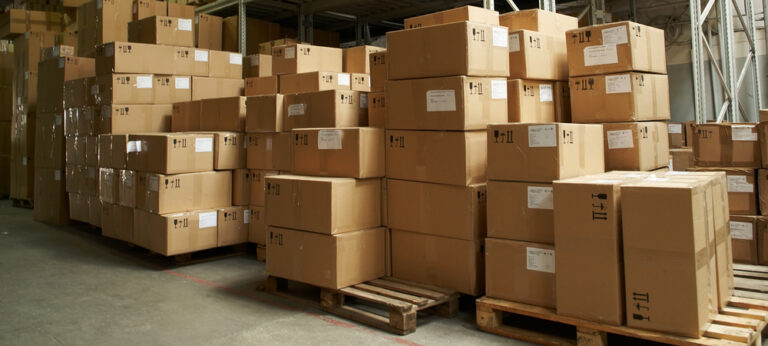For ecommerce stores, shipping boxes are one of the most common materials used for shipping out customer orders. They are easy to transport, store, and use. They also come at a relatively low price for what you get out of them. However, there are some pitfalls to consider and avoid when packaging and shipping boxes that can make your life much easier if done correctly. These include:
Boxes should be the same size and shape to avoid complications.
Limit the size and shapes of boxes you use for shipping. Having too many different sizes can cause storage and shipping issues. Lots of different sized boxes will require more storage space and can make them harder to stack when preparing packages to ship. If most of your boxes are the same size and shape, stacking becomes much easier.
Packages must be well-secured with tape or bubble wrap.
While it may seem obvious, the main reason packages break is because they are not well secured. As a customer, there’s nothing worse than receiving a package that you have been waiting for, only to find it was not properly secured and has come open. Then seeing its contents all over the ground – trust me, I’ve had this happen. So avoid this by making sure your boxes are properly taped or bubble wrapped to keep them secure for the course of the journey.
Use appropriate packing materials such as newspaper, peanuts, styrofoam chips, or bubble wrap for fragile items like glassware or porcelain figurines.
It should go without saying, but packing your items in appropriate materials will make them easier to handle. So if you are sending fragile items like glassware or porcelain figurines (because who really wants to break these), be sure that they’re packed appropriately with peanuts, bubble wrap etc.
When just starting out or adding new products to your line, it’s a good idea to do a few test runs to stress test your packaging procedure for those items. Ship a few out mailed to friends, family, or yourself. See how your packaging holds up to the rigors of shipping through common carriers.
Better to do this and work out any kinks than to have unhappy opening boxes of damaged products.
Close all seams on the box before sealing it shut with tape.
Sealing a box completely on its seams with tape will make it more secure. This is especially important if you are shipping anything that is a bit heavy which might otherwise put too much stress on the box. Without sealing the seams, the box may start to sag on the bottom as it is moved and eventually the packaging tape holding the bottom shut might give way.
Of course if you are shipping anything with liquids, if something does happen to leak, it will be less likely to drop through the box.
Include an invoice inside each package containing customer information and order details
While it’s possible that you’ll never have this issue arise, including an invoice inside each package containing customer information and order details is good practice. It will give the post office or shipping company additional information about what was ordered and shipped out if there is any confusion – which I’m sure won’t happen but you never know.
Wrapping Up (No Pun Intended)
The most important thing you can do when shipping boxes is to make sure they’re the same size and shape. This helps with storage and stacking, which helps your storage facility to run more smoothly. Make sure you utilize appropriate packaging materials inside to secure items from shifting around inside the box and protect them from damage. Close and seal all seams with packaging tape to keep your boxes secure from the moment they leave your facility until they arrive at their destination. Lastly, include an invoice inside each package containing customer information and order details in case there’s any confusion – which again probably won’t happen, but better safe than sorry!









